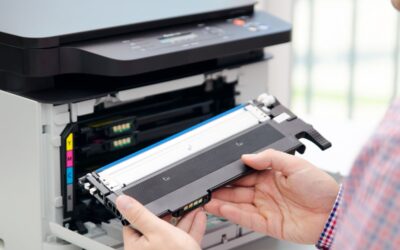For this article in our PPM series, we are examining the difference between IPM and PPM printers. Furthermore, we’ll also explore IPM printing including IPM meaning, IPM metric, and learn how to calculate IPM speed. This series will help you understand how your printer works and the speed of your printer.
Images per minute (IPM) and pages per minute (PPM) are the two most common speed metrics used for printers. Your printing time depends on a few different elements, such as cartridges and paper quality.
You can find PPM and IPM measurements in the specs section of your printer. This section will include details about your printer, including a speed figure measured in either IPM or PPM. Both IPM and PPM are used to calculate print speeds. However, they don’t use the same calculation when printing.
What is the difference?
Pages Per Minute (PPM):
Previously, we discussed how PPM measures the print speed of a regular sheet of paper. This calculation doesn’t include graphics or complex images. So, if you plan on printing graphics or complex images; the PPM speed may not be accurate.
PPM calculation is not standardized so that the print speed will vary depending on each printer’s manufacturer. These different calculations can confuse when comparing different models. That is why it’s best to always contact a technician with any questions.
Images Per Minute (IPM):
In contrast to PPM, IPM can print more complex images and graphics, often best suited for heavy color-based images. IPM uses Microsoft Word, Excel, and Adobe test pages to measure print speeds more accurately. This method is used by the International Organization for Standardization (ISO). Manufacturers use these applications to increase the accuracy of their print speed calculation.
IPM printers offer some consistency in calculating speed which is useful for the user. This makes comparing printers easier due to their being a common standard used among IPM printers.
Key Differences:
- Images Per Minute (IPM):
- IPM metric best for regular A4 pages
- Provides more accurate speed for corporate logos and complex images.
- Consistency in standards
Pages Per Minute (PPM)
- Factors plain text when calculating max PPM
- Calculation doesn’t include graphics, complex images, lines, or other objects.
- May correlate to the ISO test results or results by other test methods.
IPM Metric

When calculating IPM speed, each page must be printed a certain number of times for accuracy. The pages must go through the printing process multiple times. Each printed page must be inspected and compared to the original document to check for any errors.
If any errors are found, the page must be printed again. Once consistent results are achieved, the three files are then combined and converted into an average. This average then becomes what we know to be the IPM Speed for your printer.
Key Takeaways:
Comparing an IPM printer and a PPM printer can be a bit confusing. Although IPM and PPM seem similar, there are key differences to keep in mind. For reference, it’s best to remember that both IPM and PPM printers use different calculations when defining their speeds.
Gaining a better understanding of IPM and PPM will give you more confidence when using your equipment. Be sure to check back in for the next related article in our series.
Have more questions about your office equipment? BDS has you covered with our qualified technicians who are happy to provide high quality service to meet your business needs.






